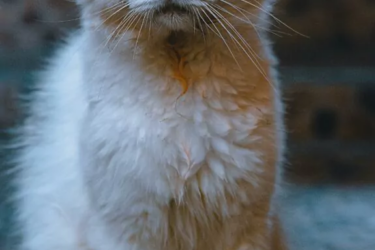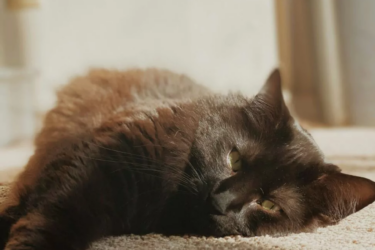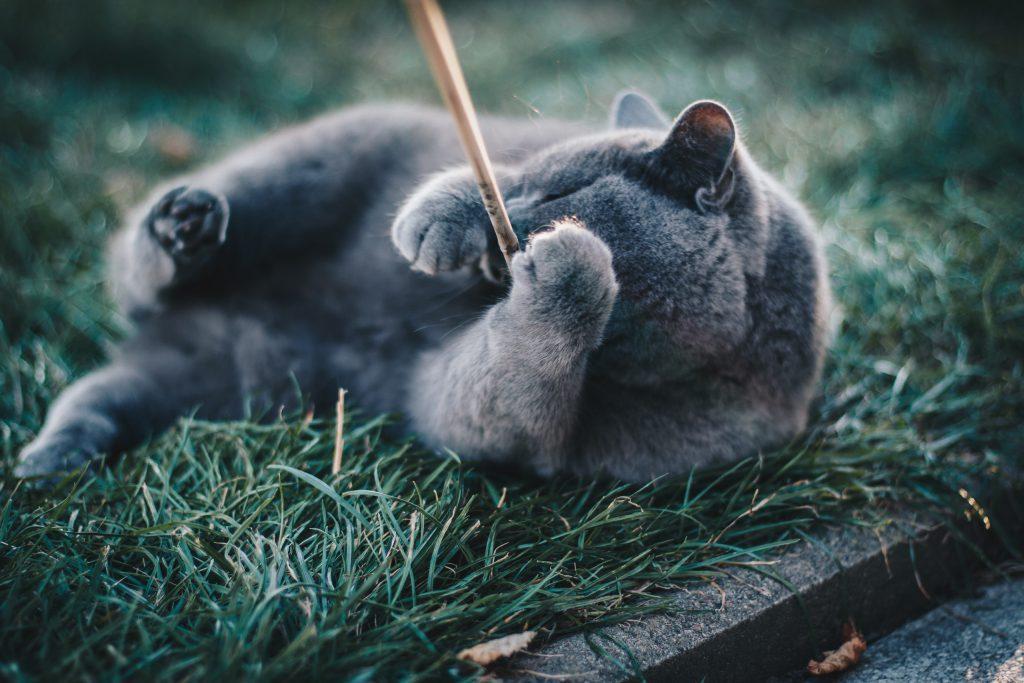
A Russian Blue is stunning. This breed is slim and muscular with a silver-colored coat. And it is incredibly affectionate and loyal. So, if you’re looking for a new best friend, the Russian Blue is definitely for you!
In this blog, you’ll discover everything about:
- The origin of the Russian Blue
- The personality of the Russian Blue
- The appearance and coat of the Russian Blue
- Caring for a Russian Blue
- The health of a Russian Blue
- How long does the Russian Blue live?
- Buying a Russian Blue (kitten)
1. The Origin of the Russian Blue
The name of this breed already gives a hint. The Russian Blue most likely originated in northern Russia. In Russia, it can get very cold, and the coat of this breed has adapted to that – it’s dense and feels a bit like soft plush. At the end of the 1800s, the first Russian Blue was taken to London and shown at a cat show. At the time, they called it an ‘Archangel Cat.’
During World War II, it seemed that this breed might go extinct, but fortunately, someone decided to cross the Russian Blue with a British Shorthair, a Siamese, and the European Shorthair. This led to the creation of two new breeds: the Black Russian and the White Russian. However, the Russian Blue remains the most popular and is a favorite at cat shows and as a pet.
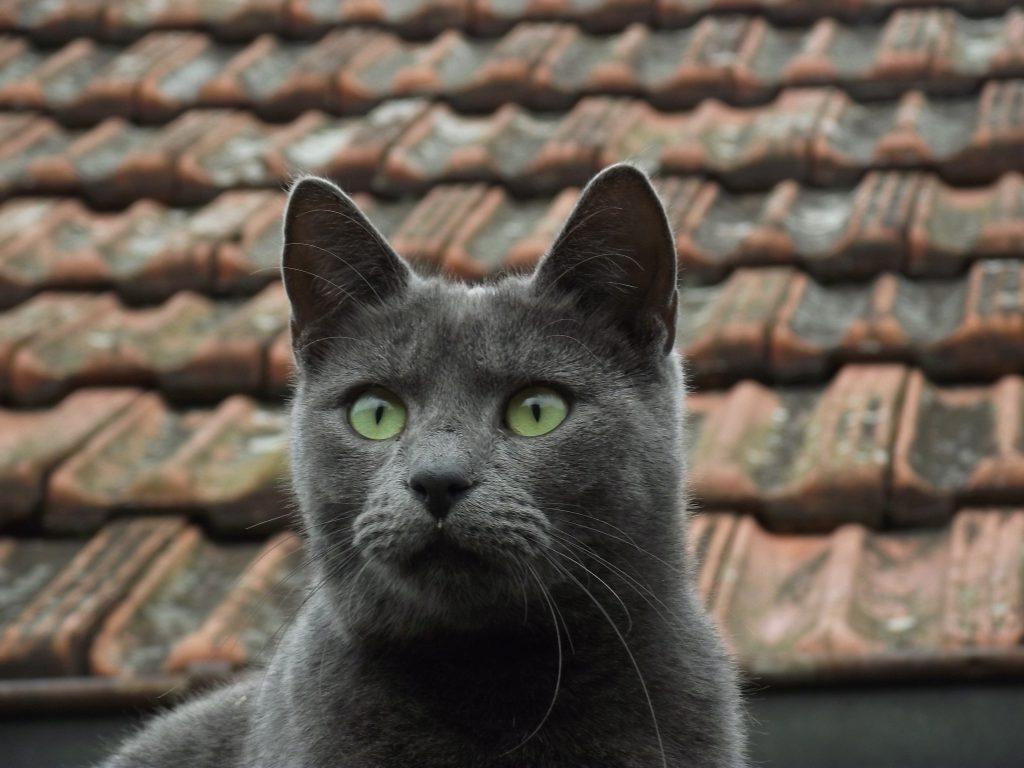
2. The Personality of the Russian Blue
Are you living with a Russian Blue for the first time? They might be a bit reserved at first because Russian Blues tend to be a little shy. But once they get to know you, they will completely dedicate themselves to you. You can count on a cat who is crazy about its new family, always greets you kindly, and follows you everywhere.
In addition, Russian Blues are particularly calm. They are friendly, smart, and very loyal to their owners. However, they also appreciate their peace and find a safe, stable environment very important. Make sure your cat has places in the house where it can retreat and sleep peacefully. A tall cat tree is perfect for this!
3. The Appearance and Coat of the Russian Blue
The thick, blue-gray coat of this breed is not the only thing that makes it special. A Russian Blue also has beautiful bright green eyes. The body of these cats is long, slim, and muscular. Their legs are also long and slender, making it sometimes look like Russian Blues walk on their toes. And no surprise, their tail is also long. The weight of this breed varies, but generally, males weigh about 5 kg and females 4 kg. They are therefore medium-sized cats.
Fun fact: Some Russian Blues can sense when someone doesn’t like cats and will do everything they can to win that person over.
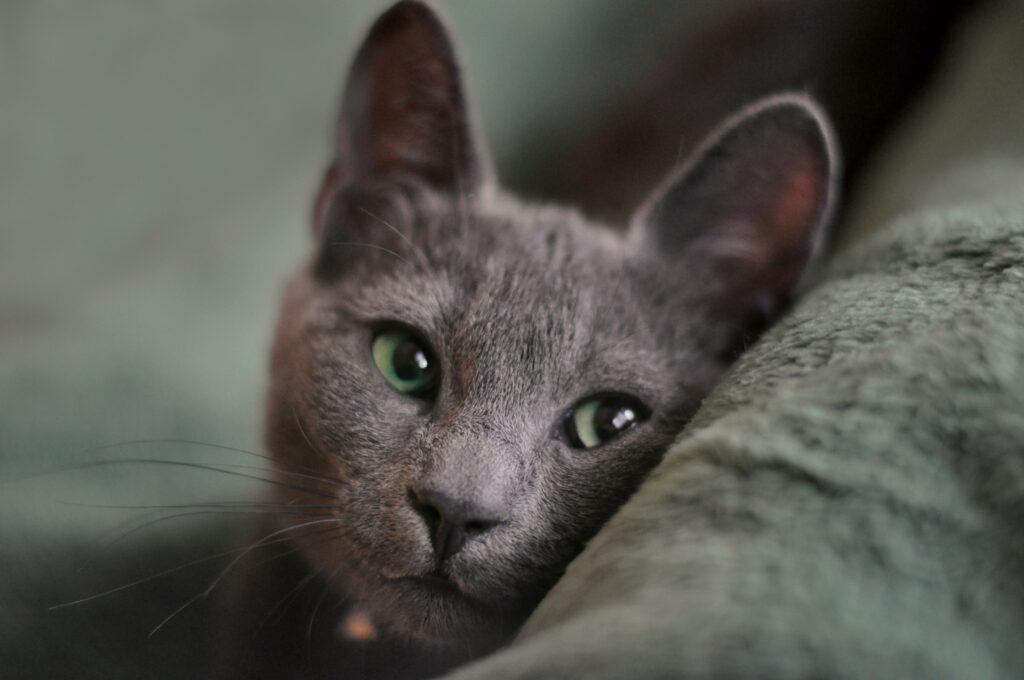
4. Caring for the Russian Blue
The most important thing a Russian Blue needs is love and attention. These cats can entertain themselves well if left alone for a day. However, they are also very attached to their owners and are always thrilled when they come home. The coat of a Russian Blue doesn’t require much maintenance. But a brushing and combing session from time to time is highly appreciated by this breed, as they love the affection and attention from their owners.
And Russian Blues are crazy about food! So, a point of attention is feeding. Russian Blues will always eat more than is good for them. And since an overweight cat is not a healthy cat, it’s best to measure the food for this breed and never give more than necessary.
Additionally, a Russian Blue needs the same as any other cat:
- A safe home
- Love and attention
- Fresh water and good food every day
- Clean litter boxes with good litter
- Toys and a comfortable cat bed
- A cat tree suitable for a Russian Blue
- Protection against fleas, ticks, and worms
- At least one health check per year at the vet
- Necessary vaccinations
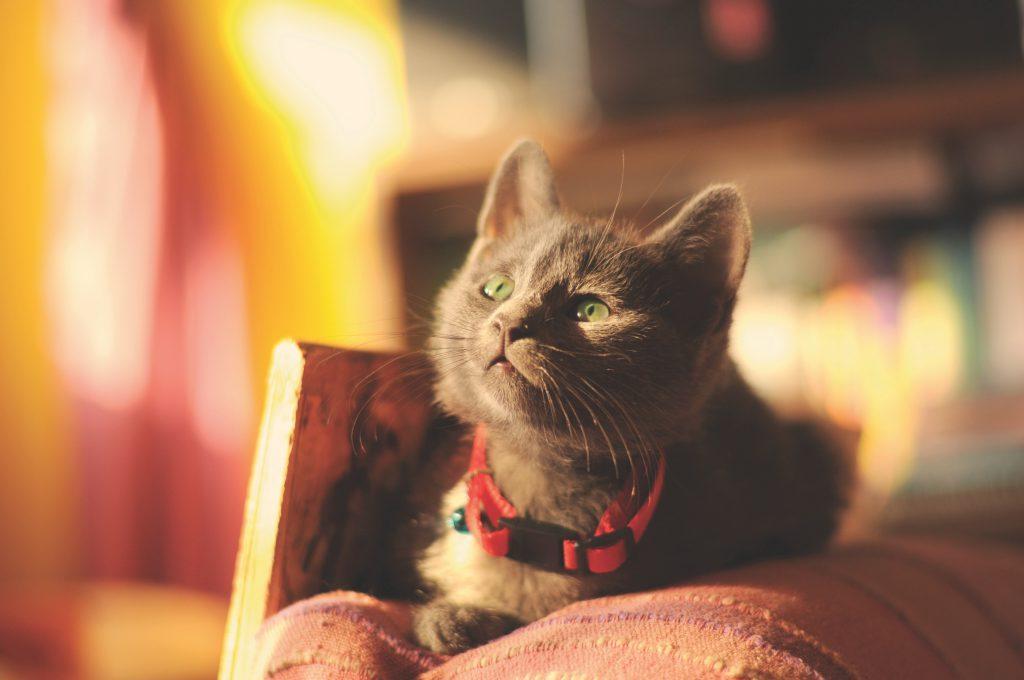
5. The Health of a Russian Blue
Purebred cats are bred for unique traits. The Russian Blue also has characteristics that make it special, such as:
- The topcoat and undercoat are the same length
- Short and thick coat
- Long, slim, and muscular body
Do you think a Russian Blue is a good fit for you? Great, because a Russian Blue has very few breed-specific diseases. However, hip dysplasia does occur a bit more frequently in this breed.
If you want to be sure you’re bringing home a healthy cat, it’s best to consult a veterinarian. You can also check the websites of Dier & Recht and the Dutch Food and Consumer Product Safety Authority for information about the breed’s health, whether it is allowed, and what rules apply to breeders.
Always buy a Russian Blue from a reliable breeder, preferably one who is a member of a breed association. That way, you can be sure the cat is healthy and well cared for. Also, ask the breeder for a health certificate or guarantee for extra peace of mind.
6. How Long Does a Russian Blue Live?
Because it is a strong breed, the life expectancy of Russian Blues is good. A Russian Blue lives between ten and 15 years. But of course, this also depends on the type of food you give and how much exercise the cat gets.
7. Buying a Russian Blue
Want to buy a Russian Blue? Go to a recognized breeder, preferably one who is a member of a breed association. That way, you can be sure you’re getting a healthy, well-socialized cat that has been bred in a humane way. Always ask for the papers, a health certificate, and check the kitten’s parents. Also, take a look at the environment: is it clean and homely, and are the parents present? That’s a good sign. Never buy cats from platforms like Marktplaats, eBay, or from unscrupulous breeders.
A Russian Blue from a good breeder costs around 600 euros. If you’re looking for a cat but don’t necessarily need a purebred, consider checking animal shelters or adoption agencies. Many lovely cats are waiting for a good home.
And remember: you don’t have a cat for just a short time, but for the entire cat’s life. Are you ready to take good care of the animal and set aside money for its care and vet visits? Then the Russian Blue could become your new best friend!
Discover here what the typical cost of caring for a cat is
Disclaimer: Petrebels is not a vet or a behaviourist: all content, information and tips on this blog are meant to inspire you and are of an informative nature. Does your cat have complaints or problems? Or do you have doubts about your cat’s health? Always go to the vet or a behaviourist.
